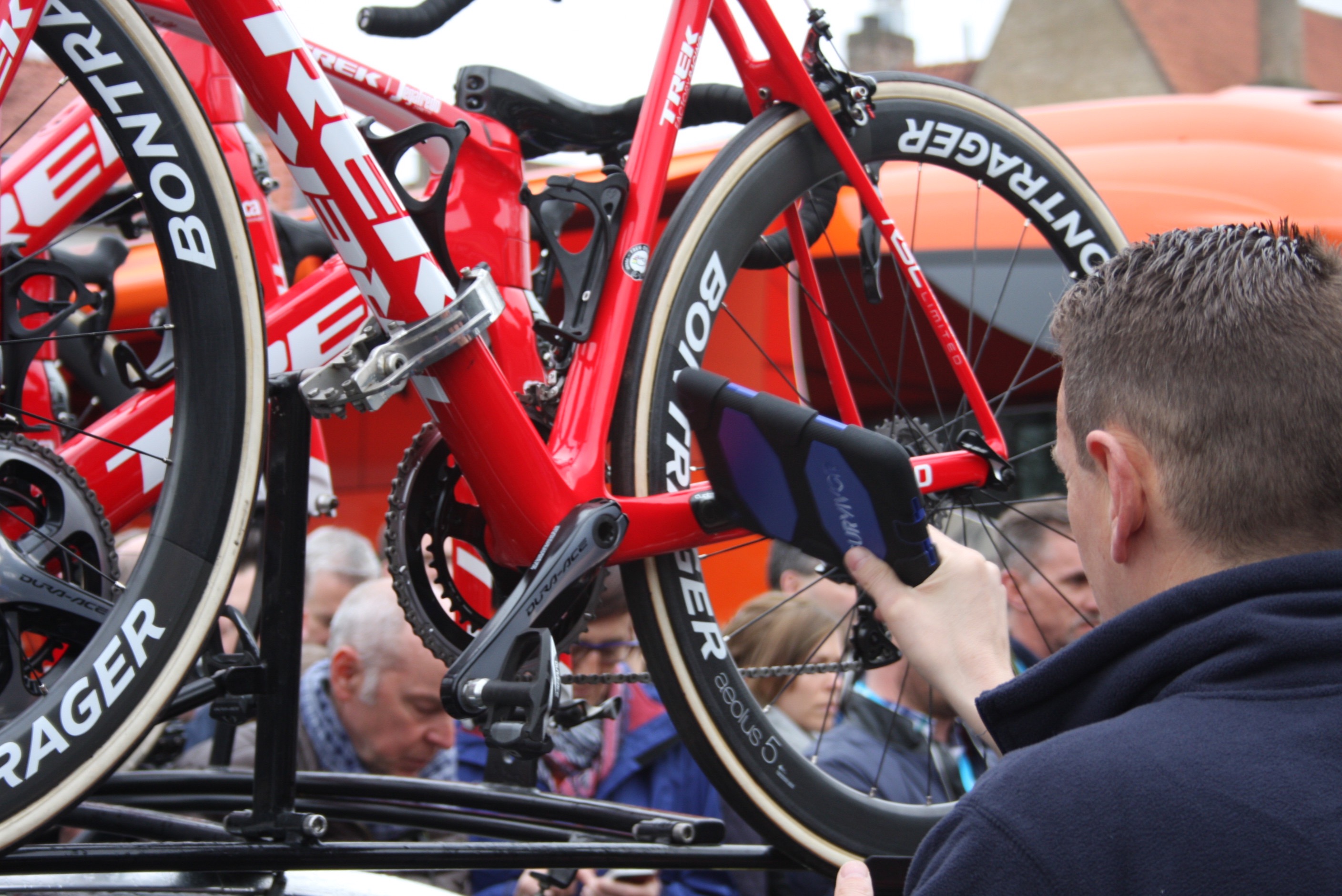It appears that the specter of technological fraud in professional bicycle racing (also referred to as ‘motor doping’) has reared its ugly head again.
The idea and accusations of motor-assisted bicycle propulsion has have been bouncing around for years. The concept and possible reality of such cheating really came to the forefront of conversations in 2010 when Fabian Cancellara appeared to have some weird hand movements on his handlebars as he nearly-inexplicably gapped his closest competitors on some of the most challenging sections of Paris-Rubaix, ultimately taking the win. And last year, Alberto Contador’s bike was disassembled on a Giro d’Italia stage in search of technological fraud. Aside from some accusations and denials, nothing really came of either episode.
And of course, you’ll remember in January of this year when the UCI found a bona fide motor in the frame of U23 Women’s racer Femke Van den Driessche at the 2016 Cyclocross World Championships in Zolder, Belgium. The grim reality of finding a motor in the bike of Van den Driessche sent shockwaves around the bicycle world, and some cycling luminaries and current racers went so far to claim that people have been ‘motor doping’ for years – and that it needs to stop.

UCI inspections for such violations have been heavy at events since January, with inspectors waving blue iPad-looking devices at the bottom bracket areas, seat tubes and wheels of bikes used in competition and back-up bicycles on top of cars. One might assume that anyone harboring the idea of putting a motor in his or her bike would yank it out post haste after the Van den Driessche incident in January, but that seems to not be the case.
News broke over the weekend that French television program Stade 2 and Italian newspaper Corriere dell Sera teamed up for an investigative report, using thermal-sensitive cameras and some serious journalistic sleuthing, to reveal up to seven bicycles most likely employed some form of motor-assisted cheating at the Coppi Bartali and gritty classic Strada Bianche races in Italy earlier this year.
The twenty-minute video below is the result of the investigation, and it ran on French television last night. It’s entirely in French, but you don’t need to know the language to understand what the brighter spots on the bicycles mean (at the bottom bracket, seat tube, rear hub) as seen in the thermal-sensitive video footage included in the report. Aside from the obvious heat thrown from the legs of the cyclists, you’ll notice hot spots on the bikes that shouldn’t be…well…hot.
As you’ll see in the video, the reporters showed their findings to UCI boss Brian Cookson, but the UCI has yet to release any statement on the matter. However, it’s clear the implications of this investigation will be quite large, and it raises a lot of questions. As of right now, there is no word on exactly who’s bikes seemed to have the derelict form of propulsion shown in the videos.
We’ll keep you posted as more news develops.
https://www.youtube.com/watch?v=e0s2yo6ws9U

